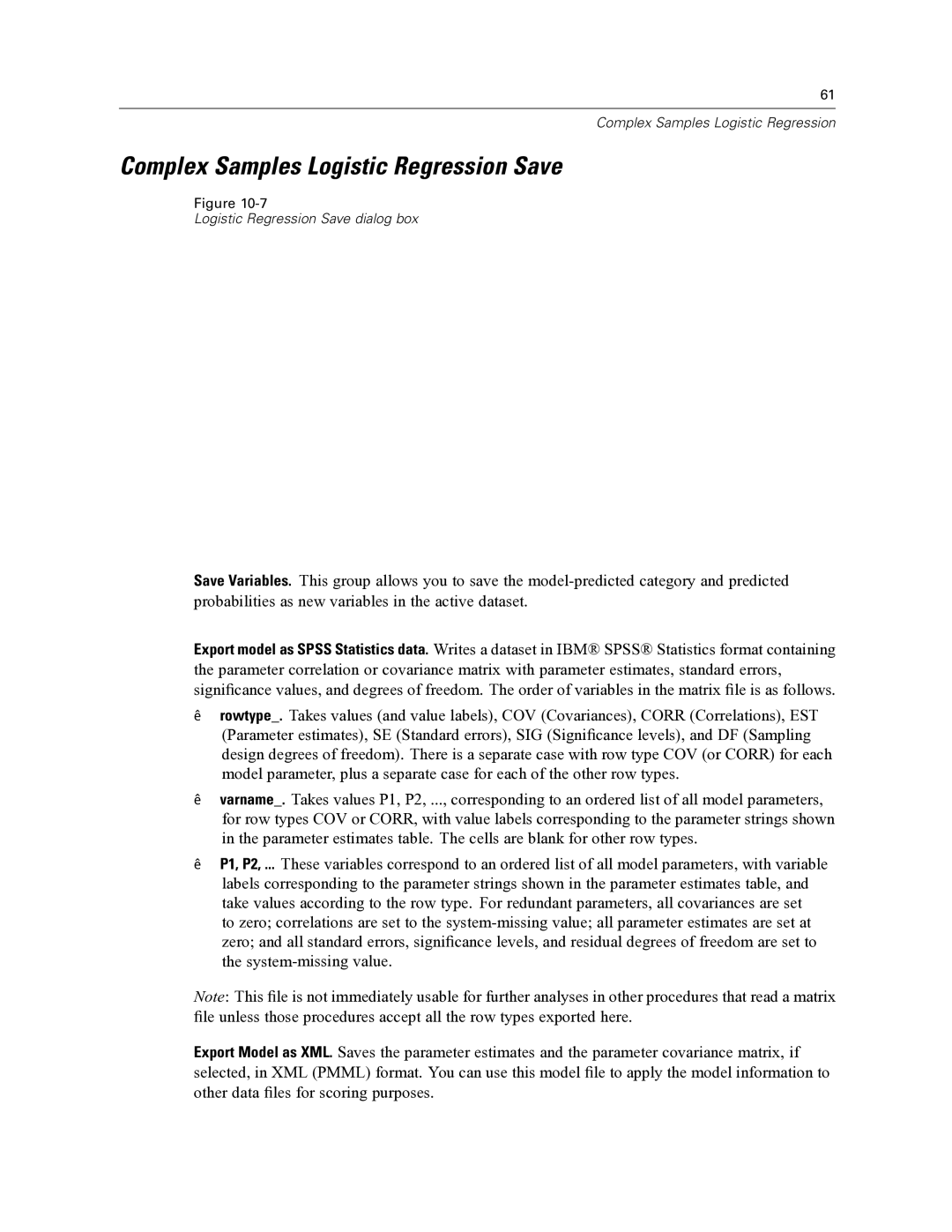
61
Complex Samples Logistic Regression
Complex Samples Logistic Regression Save
Figure
Logistic Regression Save dialog box
Save Variables. This group allows you to save the
Export model as SPSS Statistics data. Writes a dataset in IBM® SPSS® Statistics format containing the parameter correlation or covariance matrix with parameter estimates, standard errors, significance values, and degrees of freedom. The order of variables in the matrix file is as follows.
rowtype_. Takes values (and value labels), COV (Covariances), CORR (Correlations), EST (Parameter estimates), SE (Standard errors), SIG (Significance levels), and DF (Sampling design degrees of freedom). There is a separate case with row type COV (or CORR) for each model parameter, plus a separate case for each of the other row types.
varname_. Takes values P1, P2, ..., corresponding to an ordered list of all model parameters, for row types COV or CORR, with value labels corresponding to the parameter strings shown in the parameter estimates table. The cells are blank for other row types.
P1, P2, ... These variables correspond to an ordered list of all model parameters, with variable labels corresponding to the parameter strings shown in the parameter estimates table, and take values according to the row type. For redundant parameters, all covariances are set to zero; correlations are set to the
Note: This file is not immediately usable for further analyses in other procedures that read a matrix file unless those procedures accept all the row types exported here.
Export Model as XML. Saves the parameter estimates and the parameter covariance matrix, if selected, in XML (PMML) format. You can use this model file to apply the model information to other data files for scoring purposes.
